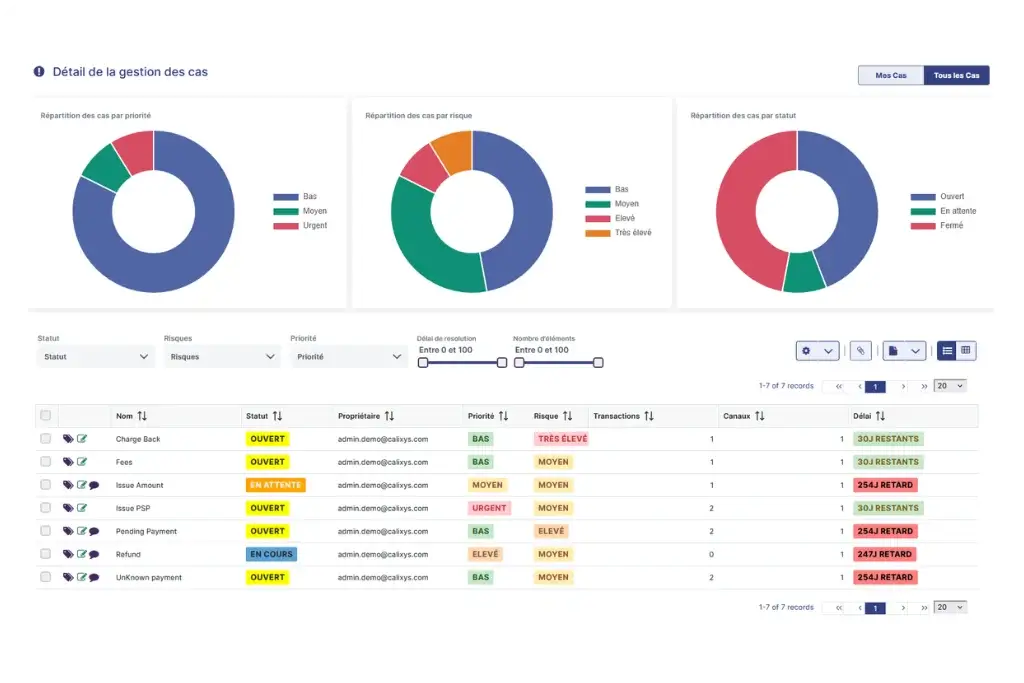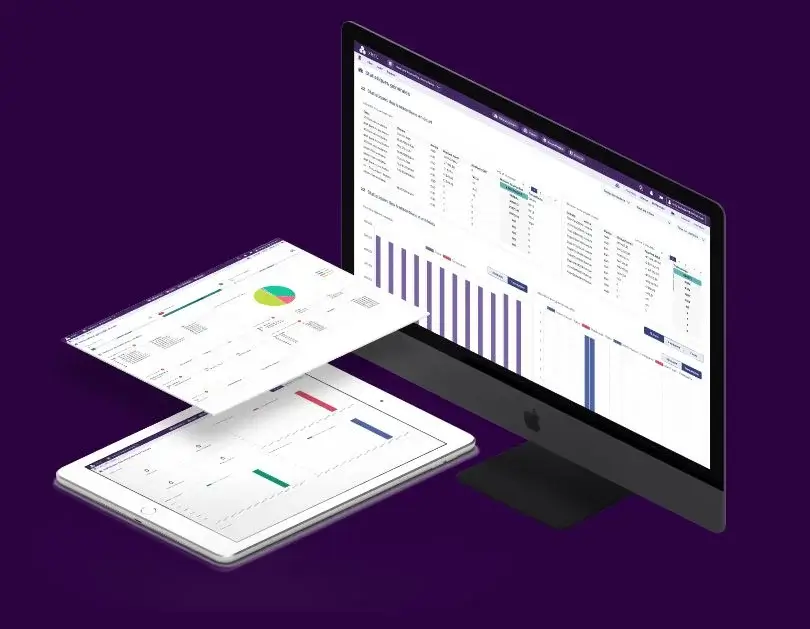Optimizing Financial Reconciliation in the Insurance Industry: The Importance of a Flexible ETL

Published
Le 28/10/2024, par :
- Anne Marie Diom
Sections
Contexte
Insurance Chief Financial Officers (CFOs) face complex financial challenges. Financial reconciliation is crucial to ensure the reliability of financial statements and regulatory compliance. This process becomes even more delicate in a rigorous regulatory environment, where errors can lead to severe penalties and damage the company’s reputation.
The insurance industry is marked by unique specificities that influence the way CFOs manage financial reconciliation. These specificities include massive transaction volumes, diversity of data sources, and constantly evolving regulations. In this context, a data-oriented approach, coupled with flexible ETLs (Extract, Transform, Load), appears as a necessity. This article aims to explore the challenges of reconciliation in the insurance industry, the importance of a data-oriented approach and automation, to meet these specific needs.
The Challenges and Specificities of Financial Reconciliation in Insurance
The Weight of Regulatory Requirements
The insurance industry is subject to a very strict regulatory framework, imposing standards of reporting and financial transparency. Regulations such as Solvency II in Europe and the Sarbanes-Oxley Act in the United States require insurance companies to maintain rigorous risk management and compliance practices. CFOs must ensure that every transaction is correctly recorded and reconciled, as errors can not only result in fines, but also damage customer and shareholder confidence.
A study by PwC indicates that 80% of insurance companies consider regulatory compliance as a major challenge, with compliance costs reaching up to 10% of annual revenues. In a study on the cost of compliance by CATO Institute, we can also read that the average American company spends between 1.3 and 3.3% of its total payroll on regulatory compliance. This underlines the importance of effective financial data management, as the ability to prove compliance often relies on impeccable documentation and rigorous reconciliation processes.
A Multiplicity of Data Sources
Insurance companies interact with a multitude of data systems, from policy administration platforms to claims management systems. Each of these systems generates data in different formats, making manual reconciliation not only laborious but also error-prone. CFOs must therefore invest in tools that can centralize this disparate data to obtain a clear and accurate overview.
Companies that centralize and analyze their data significantly increase their efficiency, while reducing operational costs. This trend is particularly relevant for insurers, where the speed and accuracy of data can make the difference when assessing risks and making pricing decisions.
Massive Transaction Volumes
The volume of transactions in the insurance industry is immense. Every day, thousands of premiums, claim payments and reserve adjustments must be processed. Insurance companies can process millions of transactions per day in busy markets. Reconciling these transactions manually is not only time-consuming, but also error-prone. Automating reconciliation processes is therefore essential to gain efficiency and reduce risk.
Companies that centralize and analyze their data significantly increase their efficiency, while reducing operational costs. This trend is particularly relevant for insurers, where the speed and accuracy of data can make the difference when assessing risks and making pricing decisions.
Moving towards a Data-Oriented approach
In a complex environment, adopting a data-driven approach becomes essential. This involves not only collecting data, but also analyzing it to derive relevant insights. A Le Monde Informatique study shows that data-driven companies are 23 times more likely to acquire customers, 6 times more likely to retain their customers and 19 times more likely to generate profits. For CFOs in the insurance sector, this means that effective data management can improve financial performance while ensuring regulatory compliance. 26.5% of companies and 33% of insurers say they are data-driven, but is this really the case? And how far do they go in this approach?
Automation of Financial Reconciliation: A Major Challenge
Reduce Risks and Gain Efficiency
Automating financial reconciliation offers significant benefits. By reducing the need for manual intervention, insurance companies can reduce the risk of human error. To be truly effective, this reconciliation automation must be coupled with centralization of financial data. According to the Le Monde Informatique study, employees lose an average of 2 hours per day searching for data. In addition, by freeing teams from time-consuming and repetitive tasks, they can focus on higher value-added tasks. CFOs can also devote more time to in-depth analyses and strategic decision-making.
Improving Traceability and Compliance
An automated solution offers better traceability of transactions, which is crucial for financial audits. CFOs can track each step of the reconciliation process, which facilitates checks and guarantees total transparency. The goal is then to have a centralized tool, which records all reconciliation operations in order to be ready in the event of an audit. Since regulations are also constantly evolving, it is necessary to have a flexible, automated and fast solution that can adapt to these regulatory changes. This also removes a huge amount of pressure from the shoulders of CFOs. They then know that they are audit-ready and reduce their risks of non-compliance.
Multi-Currency Reconciliation
For insurers operating internationally, multi-currency reconciliation is a daily challenge. Fluctuating exchange rates can complicate transaction management, making automation essential. An automated solution can efficiently manage these multi-currency reconciliations, allowing CFOs to focus on analyzing results rather than accounting adjustments. This represents a significant time saving and reduces the risk of errors related to currency conversions.
The Importance of a Flexible ETL for Financial Reconciliation
Multi-Source Data Integration
Insurance companies manage financial data from multiple sources due to the diversity of their operations and the services they offer. These sources include policy management systems, claims management platforms, customer databases, accounting and billing systems, and online and traditional sales channels. This multiplicity of sources is essential for reconciliation, as it allows insurers to cross-reference information to ensure the accuracy of financial transactions, ensure that premiums collected match policies issued, and that claims paid are consistent with reported claims. Effective reconciliation between these different data sources is crucial to minimize errors, meet regulatory obligations, and maintain financial transparency, which is essential in an industry subject to strict oversight. A flexible ETL is essential for insurance CFOs. It allows them to extract data from multiple systems, transform it as needed, and load it into a centralized database. This integration capability is crucial to ensure a consistent overview of financial transactions. Companies that master their data integration increase their turnover by 23%. This underlines the importance of a unified view of multi-source data.
Data standardization and enrichment
In insurance, raw data often requires transformations to become usable. For example, customer data may need to be normalized or enriched with additional information (such as claims histories). A flexible ETL can efficiently manage these transformations and ensure data consistency and quality.
Real-time processing
With global operations and frequent transactions, it is essential for insurers to process data in real-time or near real-time. A flexible ETL can offer batch or real-time data processing options as needed, enabling instant analytics and up-to-date reporting.
Adapting to changing requirements
The regulatory environment is changing rapidly, and CFOs need to be able to adapt without compromising process efficiency. A flexible ETL allows data flows to be modified and reports adjusted to meet new requirements, ensuring that insurance companies remain compliant. It also reduces the time and costs associated with implementing new solutions.
How Calixys XREC Meets the Specific Needs of CFOs in the Insurance Industry
An End-to-End Reconciliation Process
XREC, as an end-to-end solution, offers complete support for all stages of the reconciliation process. From data import to export to financial systems, XREC ensures fluidity in data management. Thanks to its import and enrichment module, XREC can integrate financial data from various sources, whether internal databases, ERPs or external banking platforms.
This centralization of data allows CFOs to obtain an overview of transactions, facilitating the detection of discrepancies and making informed decisions. According to a Capgemini study, 45% of companies using automated reconciliation solutions have seen an improvement in data accuracy.
Automatic Classification of Deviations
One of XREC’s key features is its ability to automatically identify and classify discrepancies detected during reconciliation. Whether they are duplicates, orphans, anomalies or errors, this classification saves CFOs time by grouping discrepancies by category. This not only makes them easier to analyze, but also allows for faster resolution. At Calixys, we estimate that automated classification can reduce the time spent analyzing and resolving discrepancies by 45%.
Multi-Currency Reconciliation Management
For insurers operating internationally, multi-currency reconciliations are a constant challenge. XREC not only allows for efficient management of transactions in different currencies, but also allows for the loading of exchange rates directly into the solution in order to have the right rates up to date and to automatically manage exchange rate differences. This allows CFOs to ensure that the figures are accurate, even in a complex environment.
Dynamic and Customizable Dashboards
XREC also offers dynamic and customizable dashboards that allow real-time monitoring of financial activity. These analytical tools help CFOs quickly identify potential problems and make decisions based on concrete data. Having reliable and near real-time reporting is essential for CFOs.
A Collaborative, Flexible and Intuitive Solution
Finally, the XREC platform is designed to be collaborative, flexible and intuitive. This means that finance teams can work together efficiently, share information in real time, and access crucial data at any time. The intuitive user interface facilitates adoption by teams, minimizing training time. Discussion channel by reconciliation account, differentiated roles (validator, approver, etc.) view by business line … the collaborative features of the platform are multiple and all fall within the same objective: to streamline communication between teams, break down financial data silos and increase efficiency.
Conclusion
In a complex environment like insurance, where CFOs must navigate an ocean of data and regulations, adopting a data-driven approach combined with flexible tools like XREC is essential. Automating financial reconciliation not only helps to gain efficiency, but also ensures regulatory compliance and improves data quality.
Insurance CFOs must embrace this digital transformation to remain competitive, ensure the accuracy of their financial reporting, and focus on long-term strategy. With solutions like XREC, they can ensure that their financial reconciliation processes are not only efficient and compliant, but also robust and sustainable in the face of future challenges.



